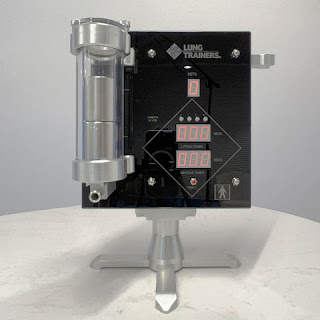breathing exercises for musicians
Maybe vocalizers
are the most egregious types of players to profit from breathing exercises.
It's relatively easy to see why proper breathing helps to undergird a persons voice
when they reach the upper and lower limits of their oral range, and, of course,
allows the songster to maintain a single note or expression for a considerable
quantum of time. This is especially important for vocalizers who go through classical
training. Still, being suitable
to hit and hold a note is not just for pieces
and choral singing. further" ultramodern" forms of music have these rudiments, too. For illustration,
gemstone vocalizers like Robert Plant and Freddie Mercury are known for their
fabulous pipes. Rock music can be each about station,
but the truly great vocalizers are also predicated in oral power and fashion.(
also again, Freddie Mercury was enough melodramatic.) Of course, we aren't
saying that these or other similar rockers trained the same way classical
vocalizers did. still, attempts at achieving
analogous oral prowess will surely be backed by
exercises.
Breathing exercises
for singing
are relatively special because
it can be delicate to draw a line between routines that are meant to strengthen the lungs
and diaphragm and those that are meant to" warm up" the oral passions
before factual singing begins. Actually, normal communication
exercises can also double as breathing
exercises for singing( you generally sing up and down one scale in a single
breath). It's quite a good deal, since you get to kill two catcalls with one
gravestone. Traditional
communication exercises can be stoked with sports-
acquainted conditioning. vocalizers who are also regular insensibility
or runners might find that they've an edge over other oral players
when it comes to controlling their breath.
Musicians can profit
from a good brace of lungs, too. The practice known as indirect breathing is
especially useful for those who play windinstruments.However, you'll know how
delicate it can be to sustain a long note,( If you have a cruel captain given
to long fermatas near the big finish of certain pieces.) indirect breathing
involves contemporaneous inhalation and exhalation. This means that you can
still keep blowing through your interminable
fermata while getting the air you need. It's a veritably delicate thing to
learn, and indeed professed musicians have a hard time doing it veritably well.
For illustration, their exhalations may come weaker whenever they gobble, which
results in oscillations in volume and sound quality. Also, learning
indirect breathing isn't like riding the proverbial bike. You don't just learn
it formerly, and also calculate on it to come back to you latterly
on. This skill can be lost without regular practice,
so establishing a routine and staying married to it's veritably important.
Actors need breathing exercises, as well. ultramodern
theaters may be equipped with numerous microphones( at least, the theaters with
enough backing are), but an actor still has to worry about maintaining a
strong, suggestive voice, especially if he or she's fortunate enough to get
plenitude of work. Actors' exercises
can be analogous to those of vocalizers, except with lower emphasis on
pitch. No matter what type of performance you do, a fit brace of lungs and a
strong diaphragm will be a great asset, along with stage presence and a thick
skin.

Comments
Post a Comment